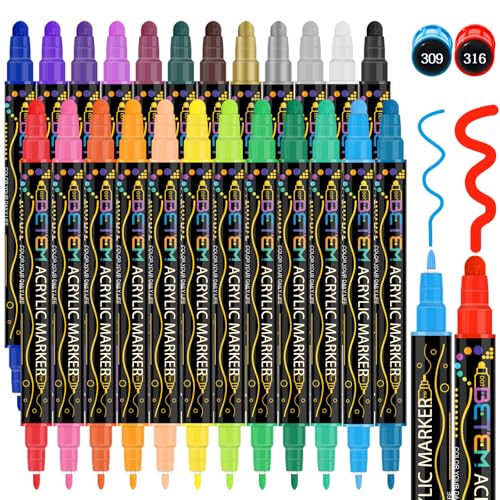Player FM - Internet Radio Done Right
Checked 6d ago
تمت الإضافة منذ قبل five أعوام
المحتوى المقدم من Audioboom, Wes Wyatt, and Mighty Line Floor Tape. يتم تحميل جميع محتويات البودكاست بما في ذلك الحلقات والرسومات وأوصاف البودكاست وتقديمها مباشرة بواسطة Audioboom, Wes Wyatt, and Mighty Line Floor Tape أو شريك منصة البودكاست الخاص بهم. إذا كنت تعتقد أن شخصًا ما يستخدم عملك المحمي بحقوق الطبع والنشر دون إذنك، فيمكنك اتباع العملية الموضحة هنا https://ar.player.fm/legal.
Player FM - تطبيق بودكاست
انتقل إلى وضع عدم الاتصال باستخدام تطبيق Player FM !
انتقل إلى وضع عدم الاتصال باستخدام تطبيق Player FM !
المدونة الصوتية تستحق الاستماع
برعاية
Twinkle twinkle, little star, how I wonder what you are…. No, really – what are stars made of and how did they get all the way up there in the sky? Let’s find out more with astrophysicist, Dr Kirsten Banks! Get ready to blast off in 5, 4, 3, 2 1!
Safety Stripes by Mighty Line Floor Tape - The Best Workplace Safety podcast talking NFPA, EHS & Warehouse Safety Tips!
وسم كل الحلقات كغير/(كـ)مشغلة
Manage series 2837380
المحتوى المقدم من Audioboom, Wes Wyatt, and Mighty Line Floor Tape. يتم تحميل جميع محتويات البودكاست بما في ذلك الحلقات والرسومات وأوصاف البودكاست وتقديمها مباشرة بواسطة Audioboom, Wes Wyatt, and Mighty Line Floor Tape أو شريك منصة البودكاست الخاص بهم. إذا كنت تعتقد أن شخصًا ما يستخدم عملك المحمي بحقوق الطبع والنشر دون إذنك، فيمكنك اتباع العملية الموضحة هنا https://ar.player.fm/legal.
Safety Stripes by Mighty Line is a podcast series produced by Dave Tabar and Wes Wyatt. The show and schedule will be Mighty Line Monday Minute presented by Dave Tabar, and Wednesday Warehouse Safety Tips by Wes Wyatt. Podcasts will be weekly and highlight general industrial and workplace safety topics. View the blogs, videos and articles at https://mightylinetape.com/ Vodcasts, and videos. Also all Mighty Line Minute podcasts at https://www.mightylineminute.com/
https://vimeo.com/mightylinefloortape
Get Free Samples of Mighty Line Floor Tape
Learn about Mighty Line Floor Tape and Mighty Line Floor Signage
View all our podcasts at https://mightylinetape.com/pages/safetytips
Operations are critical to every industry. It is essential that all employers maintain safe workplaces, and that all employees and visitors engage in behaviors that assure that all will return home safely. The Safety Stripes podcast will discuss important warehouse, industrial and commercial safety topics that management, safety managers and others with safety responsibilities can use to be more effective in protecting both employees and their operations.
Wednesday Warehouse Safety Tips will do just that – provide everyday operational tips, tools and strategies that enable employees, supervisors, and managers to put safety into action in order to reduce workplace risk.
Our goal is to improve health, safety and operational excellence at all worksites.
Safety Stripes Podcast topics include or may include
General Workplace Safety
https://vimeo.com/mightylinefloortape
Get Free Samples of Mighty Line Floor Tape
Learn about Mighty Line Floor Tape and Mighty Line Floor Signage
View all our podcasts at https://mightylinetape.com/pages/safetytips
Operations are critical to every industry. It is essential that all employers maintain safe workplaces, and that all employees and visitors engage in behaviors that assure that all will return home safely. The Safety Stripes podcast will discuss important warehouse, industrial and commercial safety topics that management, safety managers and others with safety responsibilities can use to be more effective in protecting both employees and their operations.
Wednesday Warehouse Safety Tips will do just that – provide everyday operational tips, tools and strategies that enable employees, supervisors, and managers to put safety into action in order to reduce workplace risk.
Our goal is to improve health, safety and operational excellence at all worksites.
Safety Stripes Podcast topics include or may include
General Workplace Safety
- Safety Training Programs
- Hazard Identification
- Personal Protective Equipment (PPE)
Occupational Safety and Health Administration
- OSHA Compliance Guidelines
- Six Sigma - 5s Methodology
- OSHA Inspection Tips
NFPA (National Fire Protection Association)
- Fire Safety Standards
- NFPA Codes and Standards
EHS (Environment, Health, and Safety)
- Environmental Compliance
- Workplace Health Programs
- Safety and Health Management Systems
Forklift Safety
- Forklift Operation Training
- Forklift Maintenance and Inspection
- Forklift Accident Prevention
Racking Systems
- Warehouse Racking Solutions
- Pallet Rack Safety Standards
- Racking Inspection and Maintenance
You can learn more about our warehouse safety tips and watch videos and read articles
This podcast is provided by Mighty Line floor tape and Mighty Line floor signs - learn more at www.MightyLineTape.com
This podcast is provided by Mighty Line floor tape and Mighty Line floor signs - learn more at www.MightyLineTape.com
322 حلقات
وسم كل الحلقات كغير/(كـ)مشغلة
Manage series 2837380
المحتوى المقدم من Audioboom, Wes Wyatt, and Mighty Line Floor Tape. يتم تحميل جميع محتويات البودكاست بما في ذلك الحلقات والرسومات وأوصاف البودكاست وتقديمها مباشرة بواسطة Audioboom, Wes Wyatt, and Mighty Line Floor Tape أو شريك منصة البودكاست الخاص بهم. إذا كنت تعتقد أن شخصًا ما يستخدم عملك المحمي بحقوق الطبع والنشر دون إذنك، فيمكنك اتباع العملية الموضحة هنا https://ar.player.fm/legal.
Safety Stripes by Mighty Line is a podcast series produced by Dave Tabar and Wes Wyatt. The show and schedule will be Mighty Line Monday Minute presented by Dave Tabar, and Wednesday Warehouse Safety Tips by Wes Wyatt. Podcasts will be weekly and highlight general industrial and workplace safety topics. View the blogs, videos and articles at https://mightylinetape.com/ Vodcasts, and videos. Also all Mighty Line Minute podcasts at https://www.mightylineminute.com/
https://vimeo.com/mightylinefloortape
Get Free Samples of Mighty Line Floor Tape
Learn about Mighty Line Floor Tape and Mighty Line Floor Signage
View all our podcasts at https://mightylinetape.com/pages/safetytips
Operations are critical to every industry. It is essential that all employers maintain safe workplaces, and that all employees and visitors engage in behaviors that assure that all will return home safely. The Safety Stripes podcast will discuss important warehouse, industrial and commercial safety topics that management, safety managers and others with safety responsibilities can use to be more effective in protecting both employees and their operations.
Wednesday Warehouse Safety Tips will do just that – provide everyday operational tips, tools and strategies that enable employees, supervisors, and managers to put safety into action in order to reduce workplace risk.
Our goal is to improve health, safety and operational excellence at all worksites.
Safety Stripes Podcast topics include or may include
General Workplace Safety
https://vimeo.com/mightylinefloortape
Get Free Samples of Mighty Line Floor Tape
Learn about Mighty Line Floor Tape and Mighty Line Floor Signage
View all our podcasts at https://mightylinetape.com/pages/safetytips
Operations are critical to every industry. It is essential that all employers maintain safe workplaces, and that all employees and visitors engage in behaviors that assure that all will return home safely. The Safety Stripes podcast will discuss important warehouse, industrial and commercial safety topics that management, safety managers and others with safety responsibilities can use to be more effective in protecting both employees and their operations.
Wednesday Warehouse Safety Tips will do just that – provide everyday operational tips, tools and strategies that enable employees, supervisors, and managers to put safety into action in order to reduce workplace risk.
Our goal is to improve health, safety and operational excellence at all worksites.
Safety Stripes Podcast topics include or may include
General Workplace Safety
- Safety Training Programs
- Hazard Identification
- Personal Protective Equipment (PPE)
Occupational Safety and Health Administration
- OSHA Compliance Guidelines
- Six Sigma - 5s Methodology
- OSHA Inspection Tips
NFPA (National Fire Protection Association)
- Fire Safety Standards
- NFPA Codes and Standards
EHS (Environment, Health, and Safety)
- Environmental Compliance
- Workplace Health Programs
- Safety and Health Management Systems
Forklift Safety
- Forklift Operation Training
- Forklift Maintenance and Inspection
- Forklift Accident Prevention
Racking Systems
- Warehouse Racking Solutions
- Pallet Rack Safety Standards
- Racking Inspection and Maintenance
You can learn more about our warehouse safety tips and watch videos and read articles
This podcast is provided by Mighty Line floor tape and Mighty Line floor signs - learn more at www.MightyLineTape.com
This podcast is provided by Mighty Line floor tape and Mighty Line floor signs - learn more at www.MightyLineTape.com
322 حلقات
كل الحلقات
×مرحبًا بك في مشغل أف ام!
يقوم برنامج مشغل أف أم بمسح الويب للحصول على بودكاست عالية الجودة لتستمتع بها الآن. إنه أفضل تطبيق بودكاست ويعمل على أجهزة اندرويد والأيفون والويب. قم بالتسجيل لمزامنة الاشتراكات عبر الأجهزة.



































